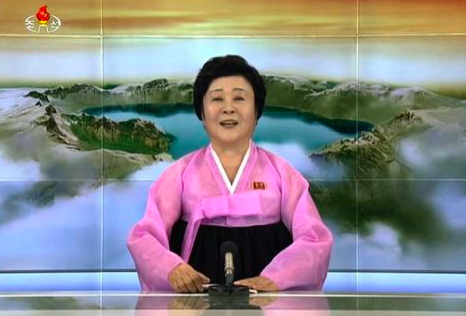
North Korea has hailed the “perfect” test of an H-bomb suitable for a long-range missile.
The announcement from Pyongyang came hours after international seismic agencies detected a tremor that was about 10 times more powerful than the quake caused by the last test.
There has been no independent confirmation that the test was a hydrogen bomb rather than an atomic device.
The test is a direct challenge to President Trump, who hours earlier had talked by phone with Japanese Prime Minister Shinzo Abe about the “escalating” nuclear crisis in the region.
North Korea, which is pursuing nuclear and missile programmes in defiance of UN resolutions and sanctions, announced on state television that a hydrogen bomb test was a “perfect success”.
The bomb was designed to be mounted on the country’s newly developed intercontinental ballistic missile (ICBM), the broadcast said.
Regrettable act
The head of the UN’s nuclear watchdog, General Yukiya Amano said the test was “an extremely regrettable act” that was “in complete disregard of the repeated demands of the international community”.
Japan has raised the prospect of further sanctions, saying curbs on North Korea’s oil trade would be on the table.
China said it strongly condemned the test and urged Pyongyang to stop its “wrong” actions. The US has repeatedly urged Beijing to do more to rein in its neighbour.
North Korea claimed in January last year to have tested a miniaturised hydrogen bomb, also known as a thermonuclear device, but most experts were sceptical.
The latest nuclear test comes amid heightened regional tension following Pyongyang’s two tests of ICBMs in July that potentially could fly about 6,200 miles, putting a large percentage of the US mainland within range.
Magnitude 6.3
Under Kim Jong Un, North Korea has been working to create a nuclear device small and light enough to fit on a long-range ballistic missile.
One expert said the size of Sunday’s detonation, measured by the US Geological Survey at magnitude 6.3, meant it was possible it could be a hydrogen bomb test.
In the Chinese city of Yanji, on the border with North Korea, witnesses said they felt a tremor that lasted about 10 seconds, followed by an aftershock.
The Comprehensive Test Ban Treaty Organisation (CTBTO) in Vienna said it had detected an “unusual seismic event” in North Korea that was larger than previous nuclear tests.
“North Korea’s mission is quite clear when it comes to this latest atomic test: to develop a nuclear arsenal that can strike all of Asia and the US homeland,” Harry Kazianis, director of defence studies at the conservative Center for the National Interest in Washington, said.
“This test is just another step towards such a goal. None of us should be shocked by Pyongyang’s latest actions.”
Homemade H-bomb
Hours before the test, North Korea’s state news agency KCNA released pictures showing Kim Jong Un inspecting a silver-coloured, hourglass-shaped warhead during a visit to the country’s nuclear weapons institute.
KCNA said North Korea “recently succeeded” in making a more advanced hydrogen bomb.
“All components of the H-bomb were homemade and all the processes were put on the Juche basis, thus enabling the country to produce powerful nuclear weapons as many as it wants,” KCNA quoted Kim as saying.
Juche is North Korea’s national ideology of self-reliance.
Tensions on the Korean peninsula have been high since last month when North Korea threatened to launch missiles into the sea near the strategically located US Pacific territory of Guam. This came after President Trump warned Pyongyang would face “fire and fury” if it threatened the United States.
North Korea further raised regional tensions on Tuesday by launching an intermediate-range ballistic missile over Japan.

Comments are closed.